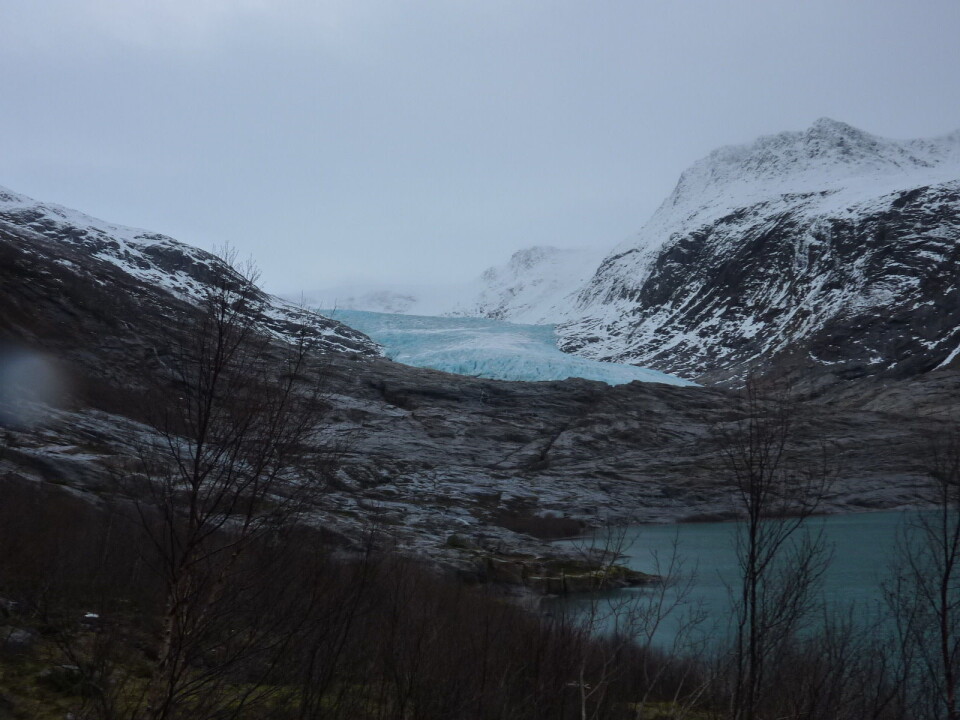The descent
Denne artikkelen er over ti år gammel og kan inneholde utdatert informasjon.

By Pierre-Marie Lefeuvre
On Saturday morning it was quite a nice feeling to wake up knowing that fieldwork was over, and that it had gone rather smoothly and without major problems. A rich British breakfast added a very good atmosphere to the group, who were more than ready to head down. Knowing that we would be outdoors very soon motivated us to pack and clean fast and efficiently. We started the descent around 9:30 and were optimistic to reach the dock in time for the boat as the day before the two journalists who had visited us (Paul and Johan) had come down in no time.

The snow had melted severely during the week and there was little remaining at lower elevations. Nevertheless, on the mountain sides we got stuck into deep and slushy patches. Luckily, we avoided most of it following what I would call a Miriam’s Classic, which consists in sliding down rather steep slopes while controlling your trajectory and speed with your ice axe. You usually end up stopped by some trees but you have already made it quite far down.
Half-way down, our group split in two, so that Miriam would continue on the original path, whereas Thomas and I would take a detour to have a look at the margin of the glacier and in particular the glacier snout. I was quite keen to do so because the surroundings of the glacier tongue had changed dramatically after a large rainfall in September that eventually led NVE to declare a flood warning in this area. Our pro-glacial discharge station transmitted live data that worried us owing to the fact that another recently installed hydrological station had been set up less than two weeks before the event and may have been damaged or even swept away. My colleague Alex (Alexandra Messerli from the Centre for Ice and Climate at the University of Copenhagen) had visited the site at the end of September and recovered our instrument, which luckily was still working. However, the aluminium pipe that protected the sensor showed some serious damage. The instrument only remained thanks to the wire linking the battery to the sensor. Just looking at the damage gave me an idea of the power that must have been released at the time. The pro-glacial sediment deposit had also been redistributed and thickened in some parts.
Finally, we caught up with Miriam, who waited for us in a cabin close to the lake. We were so far ahead schedule that she even managed to take a shower. When the boat arrived at the dock, the boat driver introduced us to his two grandchildren who were spending their Saturday with their grandpa. Not at all shy, they engaged us in conversation, curious to know why we were speaking English. The boy seemed really surprised to meet a French and a German guy and became frustrated that we could not properly understand his dialect. I personally got a lot of difficulty with the rolling “r” and strong “k”. As we left the boat with our rucksacks on our shoulders, this stunning kid shouted a loud “HA DET BRRRA FRRRANSKMAN!!”. I look forward to meeting that boy again!







